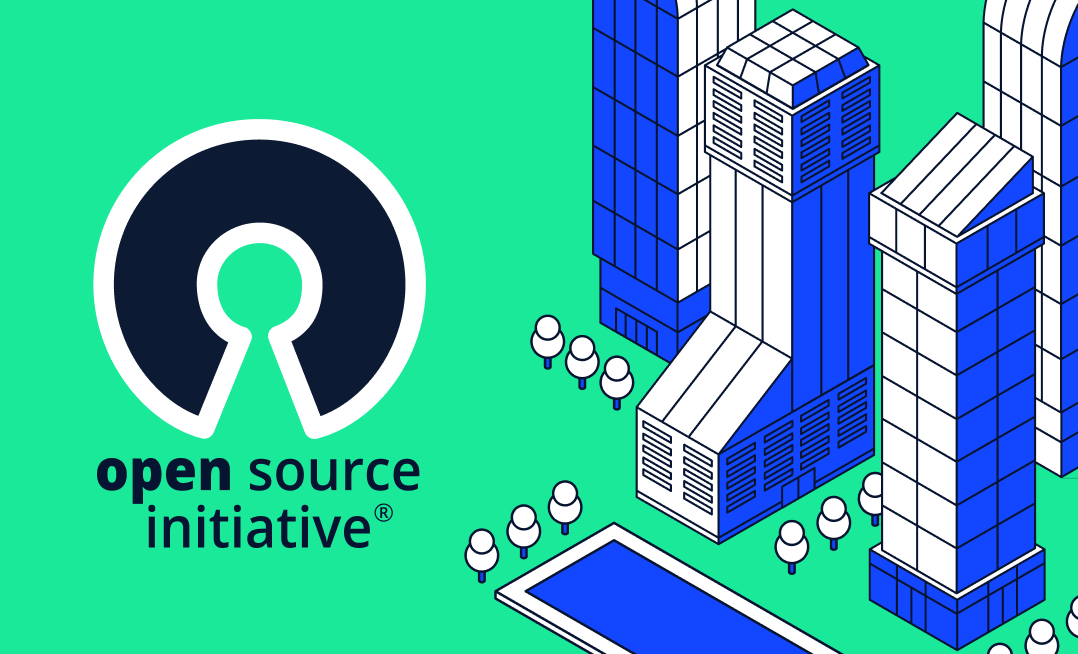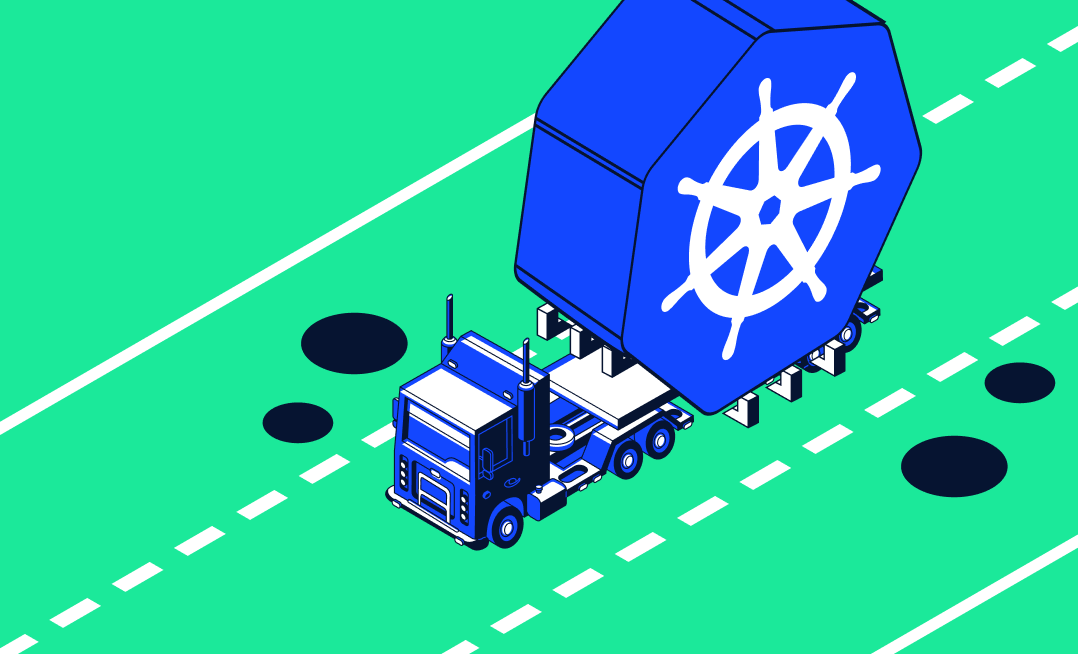Introduction
PagerDuty provides a SaaS-based platform that enables developers, DevOps, IT operations, and business leaders to prevent and resolve incidents that could potentially impact customer experience. This platform allows organizations to proactively manage events that may affect customers across their IT environment, which is crucial for maintaining customer satisfaction, revenue, and brand reputation.
PagerDuty offers a range of features such as native integrations, on-call scheduling and escalations, machine learning, business-wide response orchestration, analytics, and more. These features ensure that the right data is delivered to the right people in real time, every time.
Integrating PagerDuty with Komodor can provide significant benefits for organizations that rely on Kubernetes to deliver services to customers. By combining both tools you can consolidate your incident response efforts in a single platform, meaning that PD will alert on app availability issues or K8s events detected by Komodor, and other alerts from PD will be displayed on a single and coherent timeline on Komodor’s platform.
The integration of PagerDuty and Komodor enables:
- Faster incident resolution: Teams can identify and resolve incidents faster. The two platforms work together to automatically trigger PagerDuty notifications whenever an incident is detected in Komodor and vise-versa. This allows teams to quickly respond to incidents and take corrective action, reducing downtime and minimizing the impact on customers.
- Increased visibility: SRE, NOC, and other incident response teams can enjoy increased visibility into their Kubernetes infrastructure, which allows for better context when debugging K8s-based apps
- Seamless incident management: Seamlessly manage incidents across the entire stack. With Komodor, one glance is enough to understand whether you’re facing an app or an infra issue. Using PagerDuty’s incident management capabilities on top, teams can quickly escalate incidents to the appropriate stakeholders, ensuring that issues are resolved in a timely manner.
- Improved collaboration: Promoting collaboration between teams, enabling them to work and communicate together effectively, ensuring that everyone is on the same page, and striving towards a common goal.
- Enhanced automation: Automate incident response workflows, reducing the time and effort required to manage incidents. Komodor automates away many of the manual checks required for K8s troubleshooting, and with PagerDuty’s automation capabilities, teams can quickly and easily configure workflows that automatically escalate incidents to the appropriate stakeholders.
Getting Komodor Alerts on PagerDuty
Here is a step-by-step guide on how to create an integration between Komodor and PageDuty that automatically creates an incident when there is a problem with a service or any K8s resource:
- Go to the Monitors page and select one of the clusters. Click on the availability monitor for a specific service that is unhealthy.
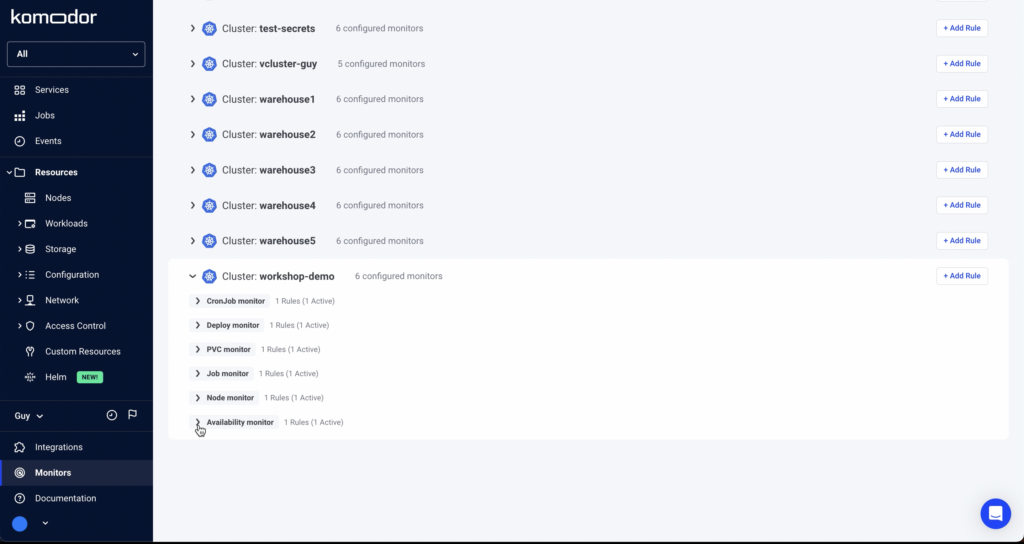
- Select the notification channel or integration you want to use. In this case, select PagerDuty and click on “Add Alerts Integration”.
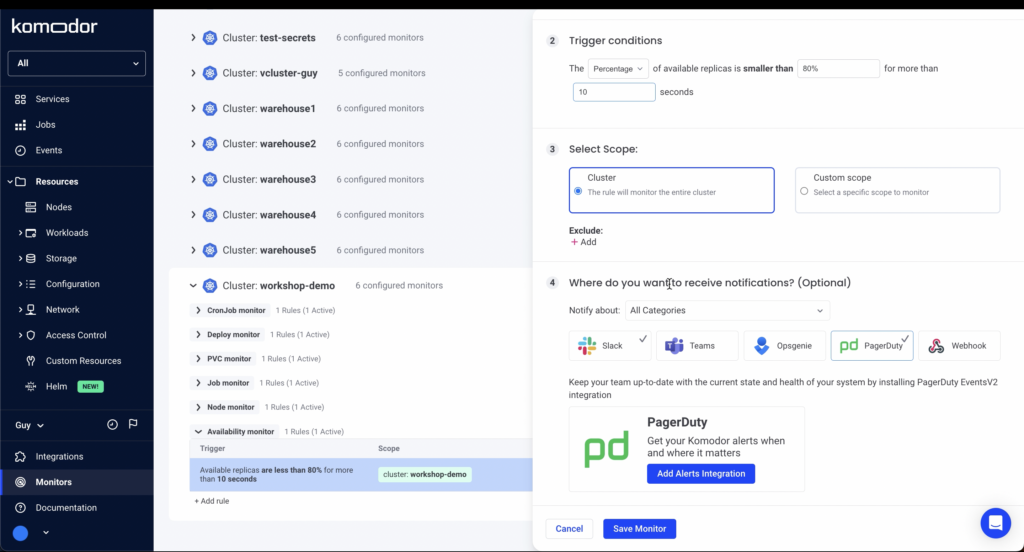
- Fill in the account name and access key. To create an API access key, go to PagerDuty and click on “Integration API Access Keys”. Create a new API key and copy it.

- Go back to Komodor and paste the API key in the access key section. Select the new account created by Komodor.
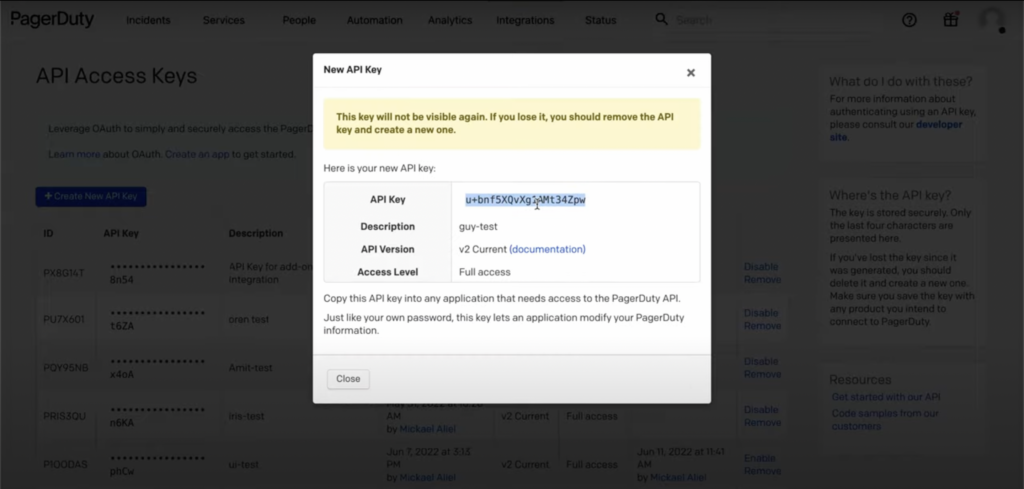
- Define the service by clicking on “Add New Page” and configuring it in PagerDuty. Go to “Integrations” and select “Service Integrations”. Pick a service and go to the “Integration” tab. Add the “Events API V2” integration.
- Copy the integration key and paste it into Komodor under “Events V2 Integration Key”.

- Save the monitor. Whenever Komodor detects a problem with a service based on the defined condition, it will automatically create an incident in PagerDuty.

That’s it! It’s a simple and easy integration to set up.
Getting PagerDuty Alerts on Komodor
Here’s a step-by-step guide on how to receive PagerDuty alerts on Komodor’s services timeline:
- Go to the integrations page in Komodor.
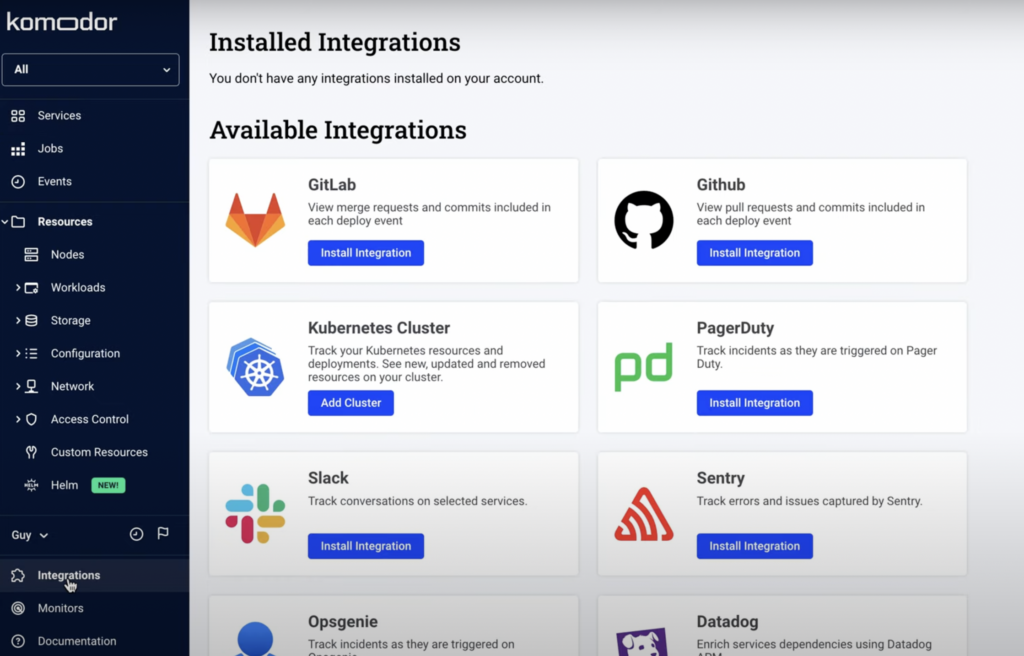
- Scroll down to the available integrations at the bottom of the page and select PagerDuty.
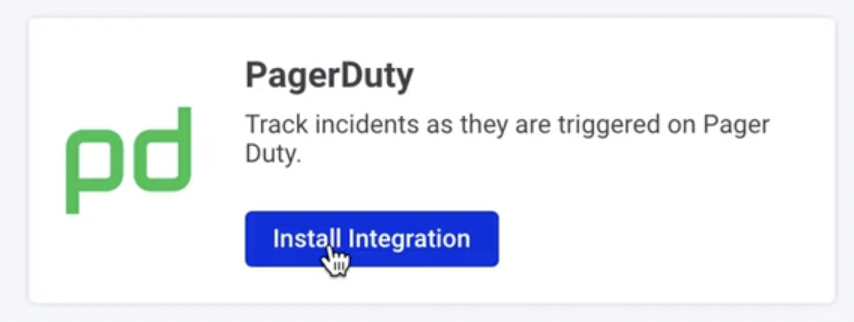
- You will be redirected to the PagerDuty website, where you will need to authorize access to your account.
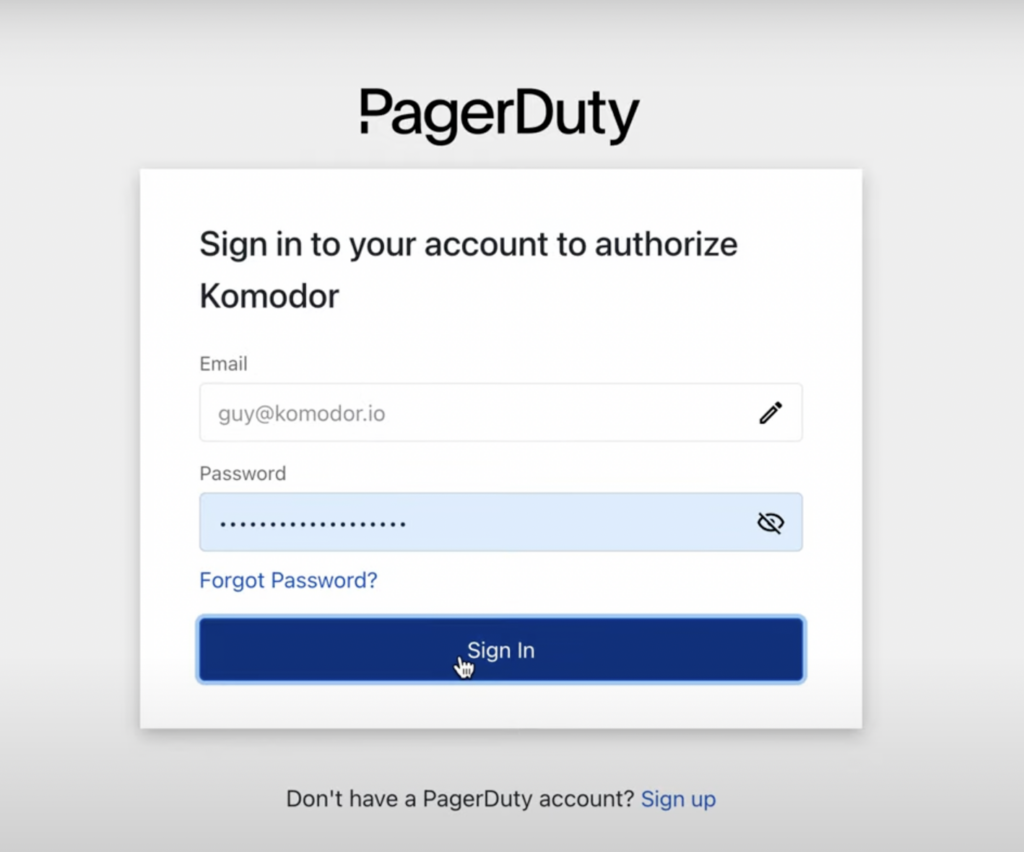
- Komodor will automatically configure the integration and create the necessary webhook.
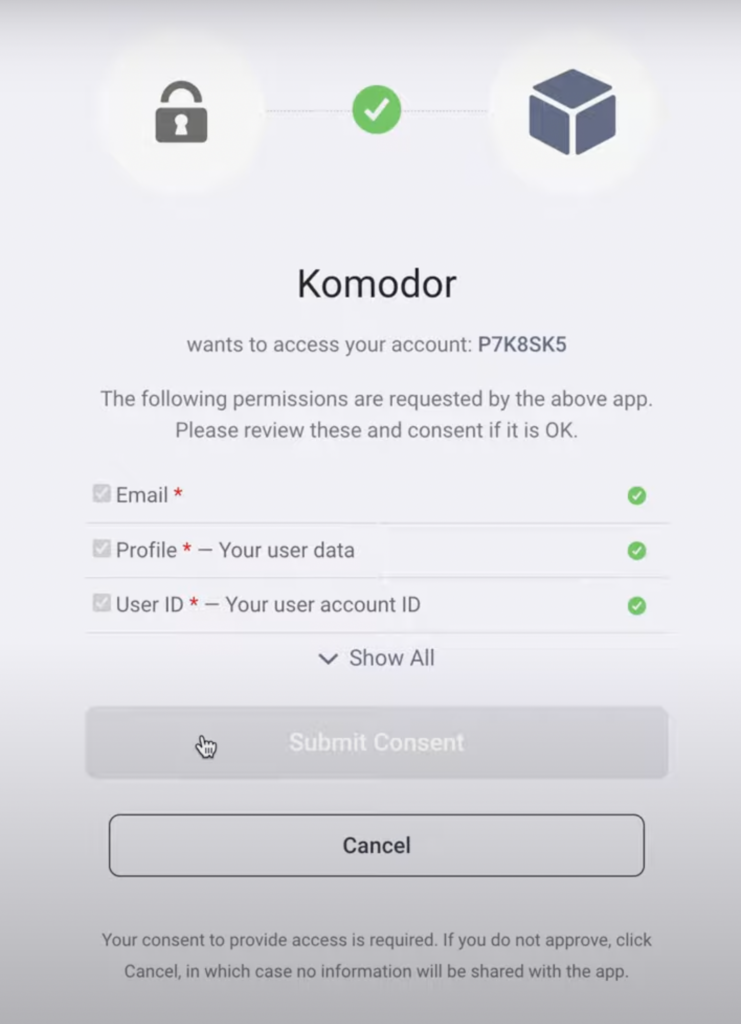
- Once the integration is complete, any time an incident is opened in PagerDuty, it will be added to the service timelines on Komodor’s platform.
That’s it! The integration is now configured and you can easily keep track of incidents across both platforms.
Conclusion
Integrating PagerDuty with Komodor can provide significant benefits for organizations that rely on Kubernetes to deliver services to customers. By enabling faster incident resolution, increased visibility, seamless incident management, improved collaboration, and enhanced automation, the integration of these two platforms can help organizations maintain uptime, minimize MTTR, and improve customer satisfaction.

